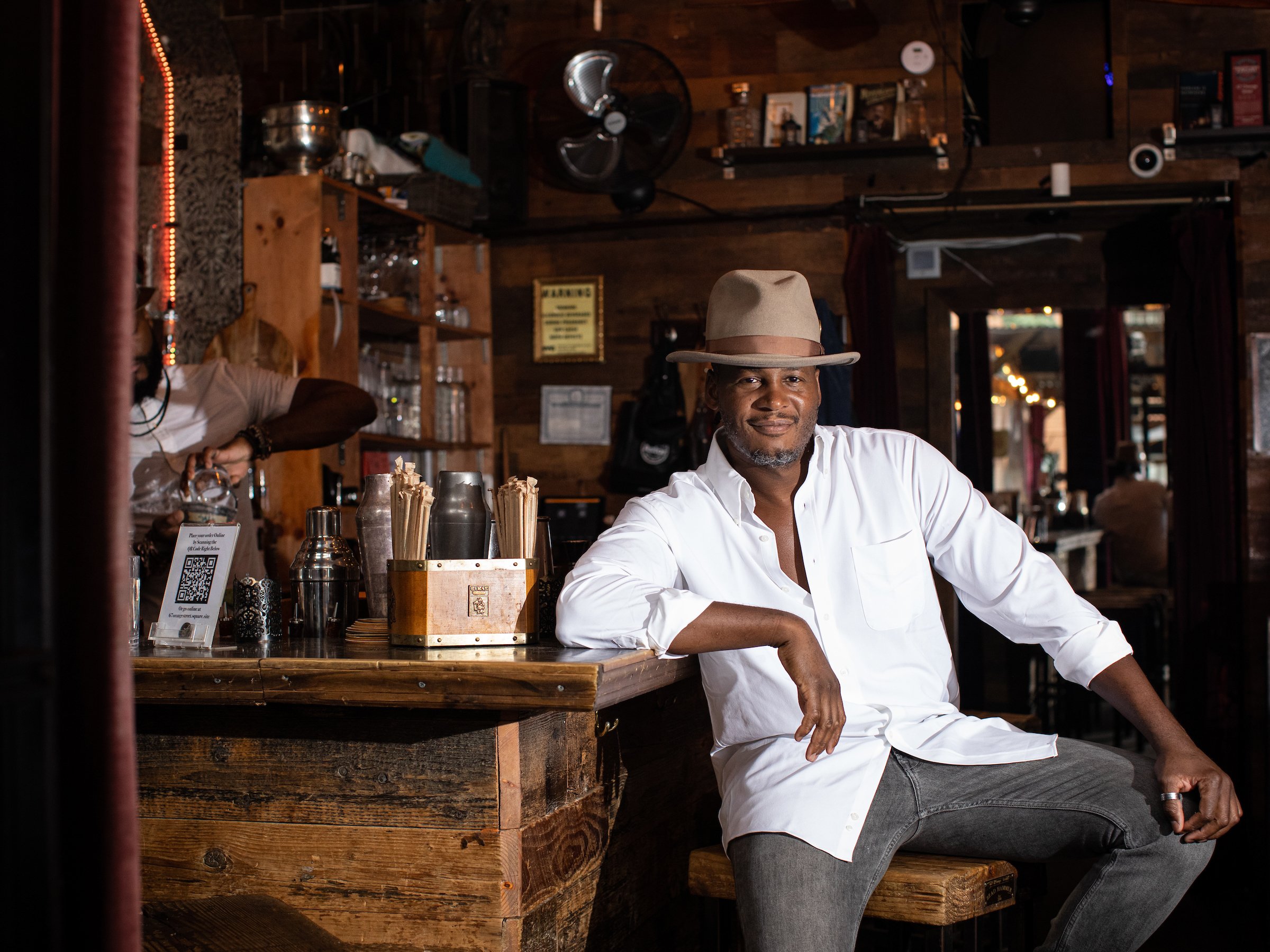Why Uncle Waithley’s All Natural Ginger Beer is Rooted in Heritage
Growing up on the Caribbean Island of St. Vincennes, Karl Franz Williams grew up drinking homemade ginger beer.
Karl Franz Williams by Clay Williams
“Ginger beer has been in my household my entire life,” says Williams, a Caribbean-American restaurateur, mixologist and owner of Harlem’s 67 Orange Street and New Haven’s Anchor Spa. “My family made it, and it was always non-alcoholic, and it was not carbonated. It was just this delicious ginger drink we looked forward to.”
As a mixologist, Williams tried using other ginger beers in the market, and he never liked drinking them, let alone mixing cocktails with them. “They just always had a ton of sugar, and they were overly sweet,” he says. “All of my bars are mixology-focus bars, and having really well-balanced drinks was always important. What I wanted was a ginger beer that had a great taste and fresh taste, but in a really balanced and unique way.”
So, way before the pandemic started, he and his team stared working on coming up with a ginger beer that suited their bartending needs. In trying to develop his own ginger beer, he got some good advice from his father. “You have to let it rest,” his father told him. You have to let it rest to develop the flavors.
Concocting a Recipe for Ginger Beer
At Solomon & Kuff’s Rum Hall, Williams and his team figured out a formula that worked with traditional rum cocktails, especially a Dark and Stormy. “Our Dark and Stormy was picked in 2016 as one of the top Dark and Stormy’s in New York City so I knew we had something,” Williams says.
Uncle Waithley's Vincy Brew
But then Solomon & Kuff’s closed in September 2019, just before the pandemic hit, and then, once the pandemic and lockdowns started, Williams started working on his ginger beer in earnest.
“I worked with a chef at my other bar, Anchor Spa, to perfect the flavor,” Williams says.
One addition to the recipe they were developing was mineral water. “There’s a natural occurring spa in St. Vincennes, and there’s magic in using mineral water to balance out the flavors,” he says.
Williams starts with an organic, Peruvian ginger, and he also decided to add some citrus. “Usually lemon is the more common addition, but lime made more sense,” Williams says. “Also, in the Caribbean, if you hear people talking about lemons, they were really talking about limes so there’s a historical basis for using limes.”
Then, he started thinking about adding other herbs or spices. “I also added turmeric, because turmeric in here, acts the way a bitter would in a cocktail,” Williams says. “I thought about this as if I was building a cocktail. Turmeric is also a root and it makes sense to have the two roots together, and it helps keep the balance. You don’t get a very sharp turmeric taste in it just like in an old fashioned cocktail, the bitters is there, but it’s not the thing that jumps out to you.”
Then, one of the last additions was Scotch bonnet peppers. “I’m most proud of that,” Williams says. “Scotch bonnet is prized throughout the Caribbean and Africa, not only for its spiciness, but also the other flavors it imparts. It gives us this additional layer of flavor that feels and tastes like the Caribbean.”
The Scotch bonnet heat isn’t like a typical hot pepper, he says. “It gives it a nice long, warming finish,” Williams says. “If you’re drinking its expecting it to be like drinking a jalapeño-infused tequila, it’s not. It’s a nice, balanced spice, and you feel this long heat that lingers”
Launching Uncle Waithley’s
Hedonist Uncle Waithley's
After the addition of mineral water, he and his staff at Harlem’s 67 Orange Street stared serving the ginger beer straight and nonalcoholic and in spiked cocktails, and then Williams started figuring out how to take it from an in-house product to a bottled ginger beer. Williams finally launched Uncle Waithley’s in January 2022. He named the brand after his grandfather, Uncle Waithley, who not only made ginger beer at home, but he was also a ginger farmer.
“He was the patriarch of my family, and my father is also named Waithley so it’s also a homage to him, too,” Williams says.
Last year, Uncle Waithley’s first big break was being stocked at the Whole Foods in Harlem. “The response was just amazing, and we were just flying out the door,” he says. “Since then, we’ve expanded to 12 other New York Whole Foods, and we’ve opened up a bunch of accounts.”
Slowly, Williams plans to expand his brand. “It’s a calculated, controlled expansion,” Williams says. “I’ve seen what happens with a lot of brands. Some small brands launch and get a little bit of momentum and interest, and they sign the deals and jump into it, but then sometimes, you’re in a bunch of accounts, but there’s no support to create pull, and then the brand gets stagnant, and you’re back to square one, and it’s hard to get that interest again.”
Because Uncle Waithley is non-alcoholic, it can be shipped anywhere, and slowly, this year, the brand will expand into new outlets organically. “We don’t want to grow faster than the demand we’re creating,” he says.



